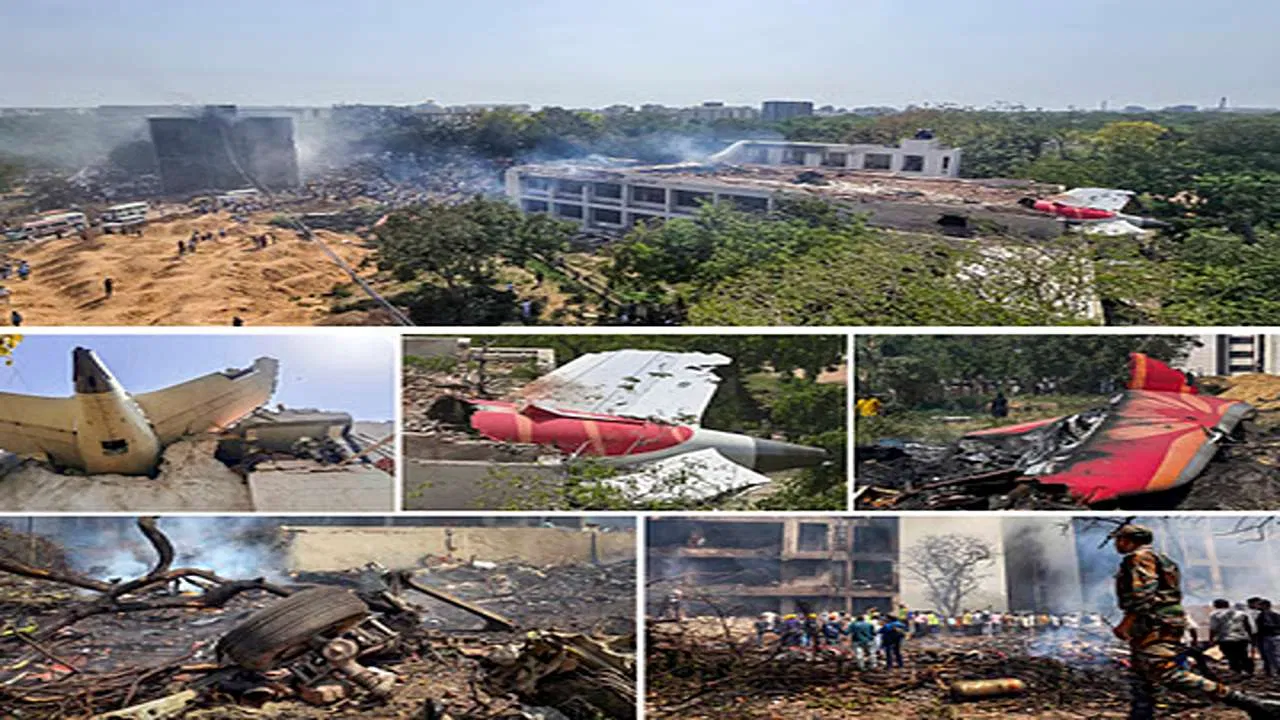The Ahmedabad Plane Crash: A Detailed Investigation into the Tragedy
Air travel, considered one of the safest modes of transportation, can turn into a nightmare when something goes wrong. The recent Ahmedabad plane crash has shaken the nation, reminding us of the vulnerabilities that still exist in aviation, especially with smaller chartered flights. This incident not only claimed precious lives but also left many questions about safety protocols and technical preparedness.
In this blog post, we explore the details of the Ahmedabad plane crash, the cause, aftermath, response from authorities, and what this means for aviation safety in India.
1. The Tragic Incident: What Happened?
The Ahmedabad plane crash involved a small chartered air ambulance that was on a critical medical mission. The aircraft was transporting a patient along with family members and a medical team from Ahmedabad to Mumbai.
Eyewitnesses reported seeing smoke coming out of the aircraft mid-air, and then it nose-dived into a deserted area. Emergency response teams rushed to the scene but unfortunately, all seven people on board lost their lives.
2. Who Were Onboard?
According to official reports, the plane was a Beechcraft C90 aircraft – a commonly used twin-engine aircraft for medical and private charter purposes.
List of passengers onboard:
- The patient
- Two family members
- One doctor
- One nurse
- Two pilots
3. What Caused the Crash?
As per preliminary investigations by aviation experts and the Directorate General of Civil Aviation (DGCA), a technical fault – possibly an engine fire or failure – might have led to the crash. Experts suspect that the aircraft suffered a mechanical failure shortly after takeoff, leaving little to no time for the pilots to make an emergency landing.
Other potential contributing factors include:
Weather disturbances (though conditions were reported clear)
Pilot misjudgment under pressure
Inadequate maintenance of the aircraft
Possible issues with fuel supply or engine overheating
A detailed investigation is underway, and the recovery of the black box is expected to provide critical data about the final moments before the crash.
4. Response from Authorities
The incident drew immediate attention from both state and central government authorities. Gujarat’s Chief Minister expressed condolences to the bereaved families and announced financial assistance. The Civil Aviation Ministry has assured a thorough probe into the incident.
Key steps taken:
Quick rescue and medical response at the crash site
Flight logs and technical records are being analyzed
Statements from air traffic controllers and maintenance crews are being taken
Authorities have also placed the aircraft operator under temporary suspension until the investigation concludes.
5. Social Media Reactions
The crash triggered a wave of sorrow across social media. Hashtags like #AhmedabadPlaneCrash, #AirAmbulanceAccident, and #AviationSafety began trending within hours. Netizens offered prayers and condolences, while some criticized the lack of strict oversight over private and chartered aviation in India.
Many healthcare professionals and emergency workers also expressed grief, as the doctor and nurse onboard were praised for their commitment to saving lives.
6. Past Aviation Accidents in India
Sadly, the Ahmedabad incident is not the first time India has faced a tragic air accident. Here are a few major ones from recent history:
Air India Express Flight 1344 (2020): Crashed while landing in Kozhikode during heavy rains, killing 21.
Mangaluru Plane Crash (2010): An Air India Express flight overshot the runway, killing 158 people.
Nepal-Bound Aircraft Crash (2018): Though not on Indian soil, it involved several Indian passengers and raised concerns about regional aviation safety.
Each of these incidents sparked temporary improvements, but long-term systemic changes are still lacking.
7. What Can Be Done to Prevent Such Incidents?
To ensure the safety of air travelers – especially in charter and emergency flights – several critical steps are needed:
✅ Stricter maintenance regulations: All aircraft, especially older ones, must undergo regular checks with updated logs.
✅ Pilot training under stress: Training modules must include emergency protocols and real-time stress simulations.
✅ Black box analytics: Encourage the use of flight data analysis software to detect warning signs early.
✅ Weather & route checks: Small aircraft should fly only after double-checking meteorological data.
✅ Audits of private operators: Private airlines and chartered plane companies need frequent DGCA audits.
8. Support for Victims’ Families
While compensation provides some financial relief, emotional support and counseling are crucial. NGOs, mental health professionals, and social support groups should be mobilized to help these families cope with the trauma.
Hospitals and aviation bodies should also honor the bravery of the medical personnel who died while trying to save another life.
The Ahmedabad plane crash is more than a news headline – it’s a stark reminder of how even well-intentioned missions can turn tragic due to technical faults or negligence. It calls for a renewed focus on aviation safety, especially in chartered and emergency medical services.
Let this tragedy not go in vain. Let it lead to reforms, accountability, and a stronger commitment to making the skies safer for everyone.
Ahmedabad Plane Crash: A Silent Cry for Safer Skies
The tragic Ahmedabad plane crash involving a chartered air ambulance has once again raised serious questions about aviation safety standards in India. The aircraft, which was en route to Mumbai carrying a critical patient, medical staff, and crew, crashed just minutes after takeoff. Unfortunately, all seven passengers, including the patient and doctors, lost their lives.
Initial reports point toward technical failure, possibly an engine fire, but a detailed investigation by the DGCA is underway. Eyewitnesses saw smoke trailing from the plane before it fell, crashing in an open field near the airport. This heartbreaking accident highlights how medical emergencies are not immune to aviation risks, especially in under-regulated charter operations. In this blog post, we explore the details of the Ahmedabad plane crash, the cause, aftermath, response from authorities, and what this means for aviation safety in India.
Social media was flooded with condolences and calls for stricter safety audits for air ambulances. While we salute the dedication of the doctors onboard, the government must ensure such life-saving missions are backed by stronger safety protocols.
The Ahmedabad crash is a grim reminder: every flight, big or small, must be treated with the same safety priority. Lives depend on it.































 movies.jpg)




























0 Comments